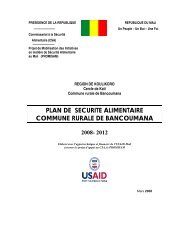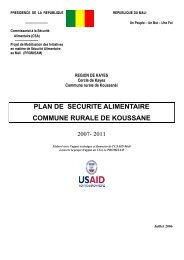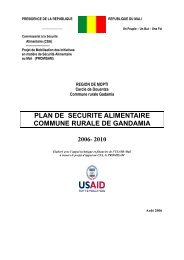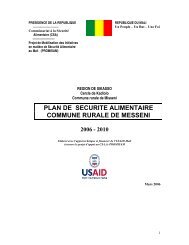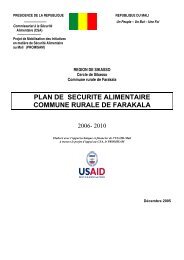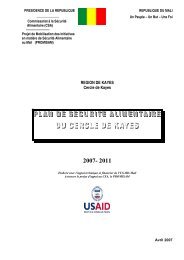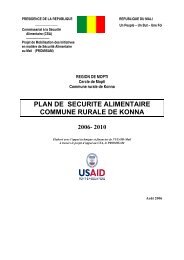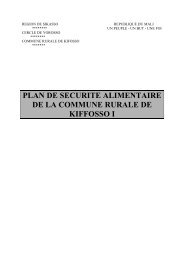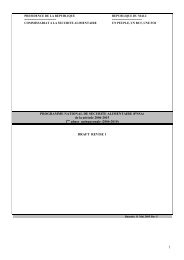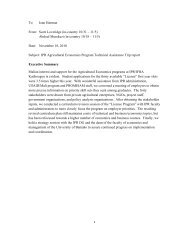STATA 11 for Windows SAMPLE SESSION - Food Security Group ...
STATA 11 for Windows SAMPLE SESSION - Food Security Group ...
STATA 11 for Windows SAMPLE SESSION - Food Security Group ...
Create successful ePaper yourself
Turn your PDF publications into a flip-book with our unique Google optimized e-Paper software.
Stata <strong>11</strong> Sample Session Section 2 – Restructuring Data Files – Table Lookup & Aggregation<br />
1. From the Data menu select Create or change<br />
variables then Other variable trans<strong>for</strong>mation<br />
commands then Make dataset of means,<br />
medians, etc.<br />
The collapse - Make dataset of means, medians, etc.<br />
dialog box will appear.<br />
2. On the Main tab in the Statistics: box <strong>for</strong> 1:<br />
change “mean” to “sum” by clicking on the dropdown<br />
arrow. In the Variables: box select ae .<br />
3. Click on the Options tab and in the <strong>Group</strong>ing<br />
variables box, select district vil hh in that order<br />
because those variables represent the identification<br />
of an individual household.<br />
The <strong>Group</strong>ing variable(s) is used to specify the variables to<br />
be used <strong>for</strong> combining cases in the collapsed file. Any cases<br />
from the original file that have identical values <strong>for</strong> all 3 of<br />
the grouping variables will be combined into a single case in<br />
the collapsed file. We want the collapsed file to have one<br />
case per household, so we use the variables that identify a<br />
household in our survey—district, vil, and hh.<br />
4. Click on the copy button, switch to the do-file<br />
editor, paste the command, switch back to the<br />
dialog box and click on Ok<br />
5. Add a comment in the do-file to explain what you<br />
have done.<br />
The Stata command is<br />
collapse (sum) ae, by(district vil hh)<br />
Collapse creates a new working file. The new working<br />
data file is at the household level, with one case per<br />
household. The variable ae is the total adult equivalents<br />
<strong>for</strong> that household. Look at the resulting file (click on the<br />
Data Browser tool). You should see four variables with<br />
only one case per household. You can also look at the<br />
variable definitions using the describe command. The<br />
computed variable ae does not have a very descriptive<br />
label any more so we need to change the label to reflect<br />
what the variable is.<br />
1. Click on Data, then Data utilities, then Label<br />
utilities, then Label variable.<br />
2. In the Variables: box, select the name of the first<br />
variable: ae<br />
3. In the Attach label to variable (up to 80 characters)<br />
box, type<br />
Adult equivalents per household<br />
4. Click on the copy button, switch to the do-file<br />
editor, paste the command, switch back to the<br />
dialog box and click on Ok<br />
71



